Material from the Georgian period in our library collections
Katie Sambrook, Head of Special Collections, King’s College London
The rich holdings of the Foyle Special Collections Library at King’s College London include some 10,000 printed and manuscript items from the Georgian period. Their subject scope is broad, with particularly strong coverage of political history, exploration and travel, science and medicine.
Political history
The transfer to King’s in 2007 of the historical library collection of the Foreign and Commonwealth Office (FCO) greatly enriched our holdings of material documenting the political history, both domestic and foreign, of the Georgian period. For much of its long history, the Foreign Office Library (formally founded in1782) fulfilled functions over and above those normally assigned to a library. The librarian not only acquired, documented and managed collections of books and papers; he had custody of all treaties with foreign powers, maintained correspondence files and undertook research on all aspects of international affairs at the request of ministers. The collection was thus very much a working tool of government, its contents handled and often annotated by government officials and used to inform and influence British foreign policy. Large bound volumes of declarations of war (1796-1813), treaties of peace (1814-41) and royal marriage treaties (1736-1893) were assembled by the Foreign Office for reference purposes; some of their contents are in printed form, others in manuscript. Other notable manuscript material includes a register of the correspondence sent and received by the Foreign Office during foreign secretary Castlereagh’s attendance at the Congress of Vienna from September 1814 to June 1815.
The library collection of the Colonial Office (formally founded in 1854) and its predecessor departments fulfilled a similar function for colonial affairs. Eight large volumes of printed and manuscript material with the title Colonial estimates document official budgetary allocations to the expanding British Empire from 1782 to 1890. A slim manuscript volume, entitled An essay on the commercial and political importance of ye island of Tabago [sic], dated 1810 and illustrated with charming watercolour maps and landscape views, represents a compelling but unavailing attempt by Tobago’s governor, Sir William Young, to persuade the London government to make this small island Britain’s principal naval and commercial base in the Caribbean. A folio manuscript volume of 1796, entitled Sketches of the political and commercial history of the Cape of Good Hope includes an introductory essay by Henry Dundas, then secretary of state for war, setting out his stance on how Britain should govern its newest overseas possession. The volume contains a circulation slip, initialled by members of the Cabinet to show that they had read it. Dundas advocates governing the Cape with a light touch, leaving existing Dutch government structures broadly intact and introducing any changes gradually. He states:
I lay it down as a fundamental principle that Great Britain must never attempt to hold possession of the Cape on the principles of a strict colonial connexion.
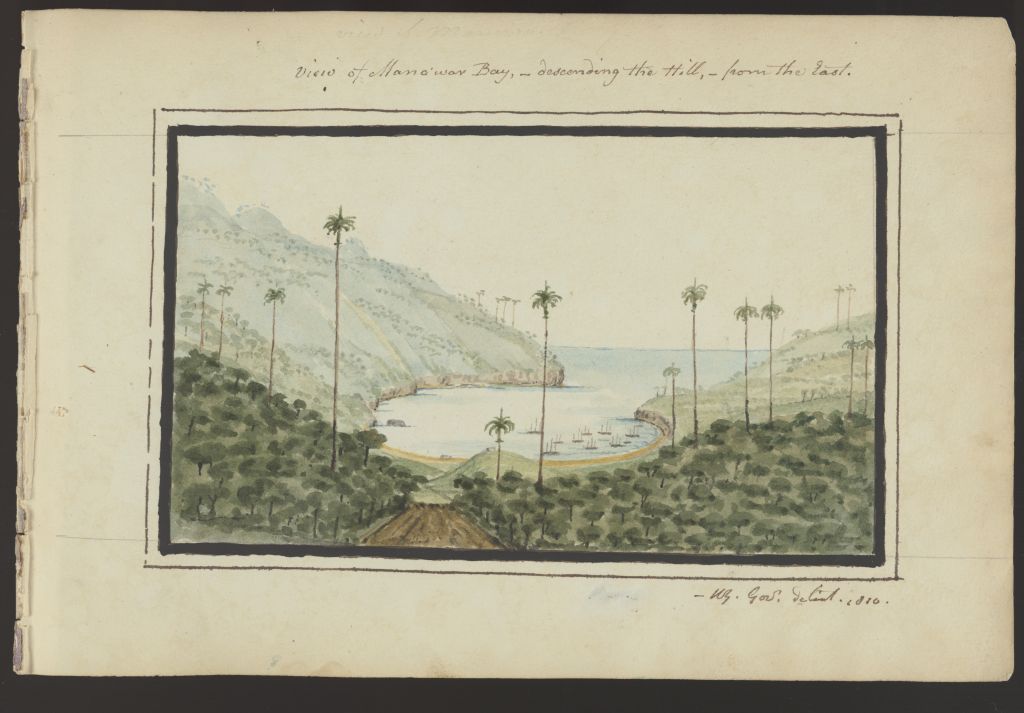
Watercolour view of Man o’ War Bay, Tobago, from ‘An essay on the commercial and political importance of ye island of Tabago’, by William Young (1749-1815). Image: King’s College London.

Coloured frontispiece of Table Bay, with Cape Town and Table Mountain in the background and title page, from The importance of the Cape of Good Hope as a colony to Great Britain, by Richard Barnard Fisher, 1816. Image: King’s College London
At this date Britain, preoccupied with its war with France, saw the Cape primarily as a strategic coastal staging post on the route to its Indian possessions. With the post-Waterloo peace would come a shift in thinking; Britain’s rule of the Cape would become more civil than military in character, as the Cape’s potential as a settler colony was realised, a development documented in such works as Richard Fisher’s The importance of the Cape of Good Hope as a colony to Great Britain (1816).
The printed holdings of the FCO Historical Collection amply reflect the main foreign and colonial policy questions of the Georgian period, with a particular emphasis on the latter. There is extensive coverage of colonial America and the American Revolution, particularly through pamphlet literature. Pamphlets include a 1776 London printing of Thomas Paine’s Common sense in which the publisher, John Almon, has left potentially seditious passages unprinted, the gaps in the text being subsequently filled in by hand, and a copy of Francis Maseres’ Considerations on the expediency of admitting representatives from the American colonies into the British House of commons (1770), annotated extensively by the leading campaigner for the abolition of slavery, Granville Sharp.
The operation of the Atlantic slave trade, its abolition in 1807 and the eventual emancipation of all slaves in Britain’s Caribbean colonies from 1833 were the focus of fierce debate in the pamphlet literature of the day, and the FCO Historical Collection contains hundreds of such publications, written by politicians, clergymen, plantation owners and others and reflecting every shade of opinion. Many of these pamphlets were printed in the Caribbean and are of considerable rarity. The Jamaican Maroon Wars of the 1730s and 1790s, the Haitian Revolution of the 1790s and the establishment by the Sierra Leone Company in 1792 of a settlement in West Africa for escaped slaves – all these developments are amply documented in books, pamphlets and parliamentary papers of the time, and again many of these items are of extreme rarity.
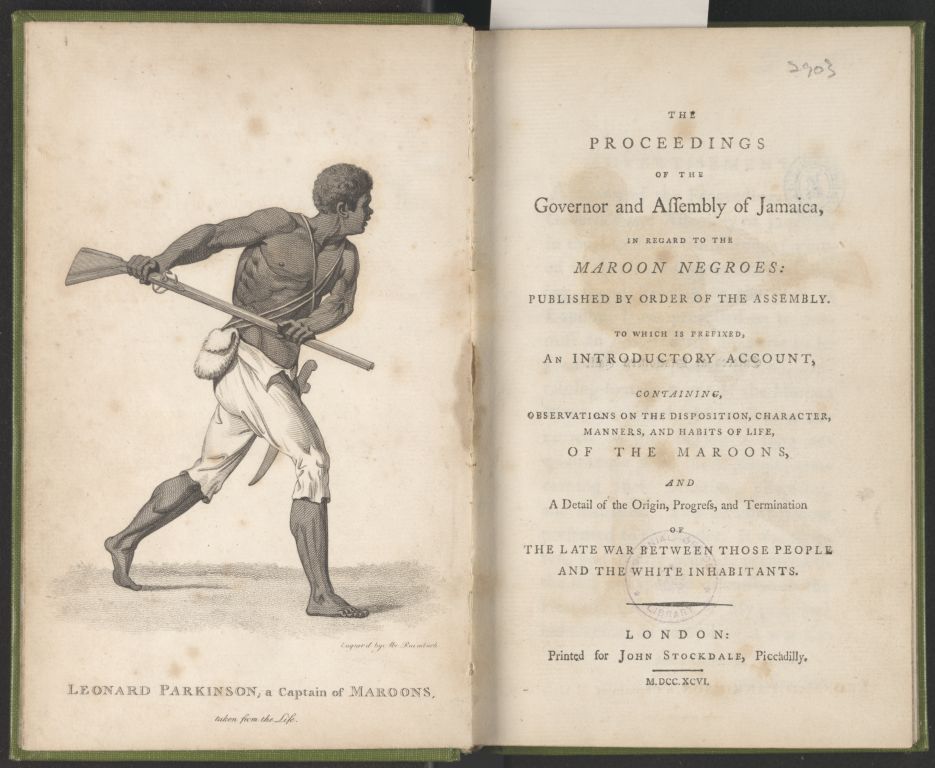
Leonard Parkinson, a Captain of the Maroons, taken from the Life, from The proceedings of the governor and Assembly of Jamaica, in regard to the Maroon Negroes, 1796. Image: King’s College London.
Complementing the multitude of pamphlets that poured off the presses of the Georgian Britain and elsewhere are more substantial works of political and economic theory, including some of incalculable influence on public discourse and events, such as David Hume’s Political discourses (1752), Adam Smith’s Inquiry into the nature and causes of the wealth of nations (1776) Edmund Burke’s Reflections on the Revolution in France (1790).
Exploration and travel
The richness of our holdings in the literature of exploration and travel from the Georgian period is due in part to the strength of the FCO Historical Collection in this field, but also to another important collection, the former library of William Marsden (1754-1836), who gave his library to King’s shortly before his death.
An East India Company official, who later became first secretary to the Admiralty, Marsden was an orientalist, numismatist, linguist and bibliophile, an active member of the Royal Society who enjoyed friendships with Joseph Banks, Alexander Dalrymple and others. His own published output includes an important Grammar of the Malayan language (1812) but perhaps his most significant achievement was the amassing of his collection of books and manuscripts, documented in Bibliotheca Marsdeniana philologica et orientalis: a catalogue of books and manuscripts collected with a view to the general comparison of languages, and to the study of Oriental literature (1827). As the title of this catalogue suggests, Asia is a major strength of the collection, which contains such works as Mountstuart Elphinstone’s Account of the kingdom of Caubul (1815), describing the British diplomatic mission to Afghanistan of 1808, George Fitzclarence’s Journal of a route across India, through Egypt, to England (1819) and a copy of Sir George Staunton’s Authentic account of an embassy from the King of Great Britain to the Emperor of China (1797), presented to Marsden by its author.
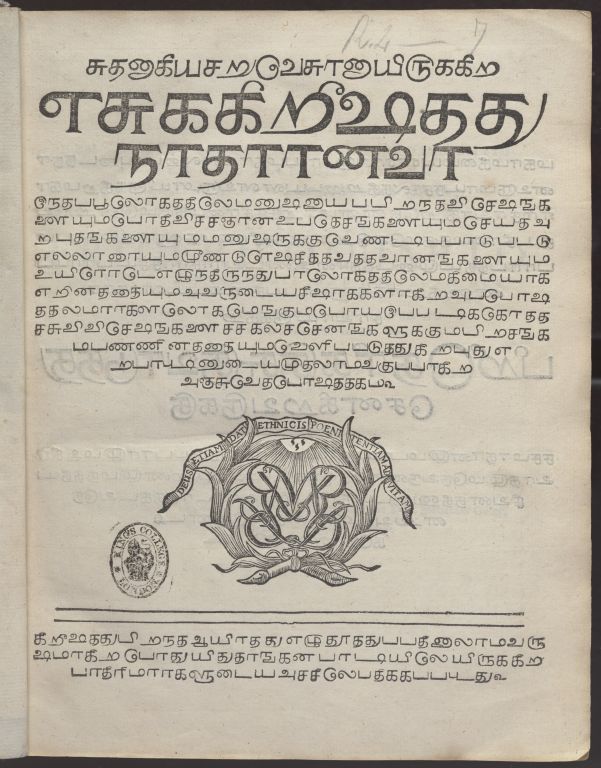
Title page in Tamil characters, from the New Testament, translated into Tamil by Bartholomaeus Ziegenbalg and Johann Ernst Gründler, 1715. Image: King’s College London.

“A Dooraunee Gentleman’, a 19th century Afghan riding a horse, from An account of the kingdom of Caubul, by Mountstuart Elphinstone, 1815. Image: King’s College London.
Marsden’s collecting interests were by no means confined to Asia, however, and the contents of his collection range from a 1765 grammar of the Andean language of Mapuche, printed in Lima, to a manuscript notebook containing an Icelandic vocabulary compiled or Joseph Banks in 1772 by Uno von Troil, Swedish theologian and later archbishop of Uppsala.
The discovery and exploration of Australia, the establishment of British colonial settlements in New South Wales and its subsequent development as both a penal colony and a destination for free emigration are themes documented in depth in our collections, primarily through the extensive holdings of the FCO Historical Collection. Works by Dampier, De Brosses and Cook, among others, document the first European voyages to Australia, and there is extensive coverage of the arrival in New South Wales of the First Fleet and its results, through such works as governor Arthur Phillip’s account of the voyage of the First Fleet (1789) and surgeon-general John White’s Journal of a voyage to New South Wales (1790). There are extensive holdings of official or semi-official publications relating to the administration of New South Wales as a penal colony and the practicalities of convict transportation, as well as numerous pamphlets discussing the benefits and drawbacks of free emigration. The exploration and settlement of the Australian hinterland is also well documented, through such rarities as manuscript copies of surveyor John Oxley’s accounts of his 1817 and 1818 expeditions to trace the source of the Macquarie River and a copy of Gregory Blaxland’s Journal of a tour of discovery across the Blue Mountains in New South Wales (1823), believed to survive in only a handful of copies.
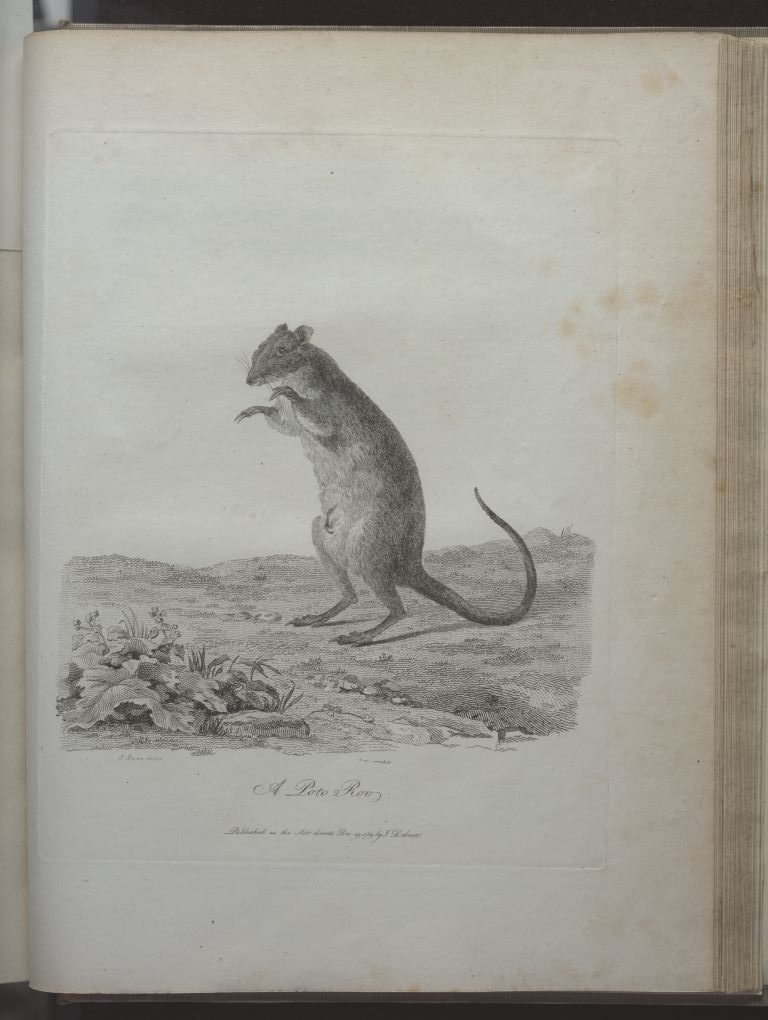
A Poto roo or kangaroo-rat, a type of Australian marsupial, from Journal of a voyage to New South Wales, by John White, 1790. Image: King’s College London
The naval officer and hydrographer Matthew Flinders is best known today for his circumnavigation of Australia and we hold a copy of his Voyage to Terra Australis (1814), but perhaps of equal interest is a large manuscript volume compiled by Flinders in 1807-8 during his imprisonment on the island of Mauritius; the volume mainly comprises accounts of Madagascar by other writers, transcribed, translated and commented on by Flinders. The exploration of mainland Africa is amply documented in our collections, which include such important publications as Mungo Park’s Travels in the interior districts of Africa (1799) and Thomas Bowditch’s 1819 account of the 1816 Mission from Cape Coast Castle to Ashantee.
Science
We have extensive holdings of scientific publications from the Georgian period, with particular strengths in astronomy, engineering and natural history. Highlights include magnificently illustrated botanical works, such as William Curtis’s monumental Flora Londinensis (1777-98) and William Woodville’s Medical botany (1790-93), beautifully illustrated with hand-coloured plates by James Sowerby, and masterpieces of 18th century technical writing, such as A narrative of the building and a description of the construction of the Edystone [sic] lighthouse (1793), by James Smeaton. Works by Erasmus Darwin, Humphry Davy and Joseph Priestley, among others, are all well represented in our collections, and our copies of some of Nevil Maskelyne’s works on chronometers are from the collection of the King George III Museum.
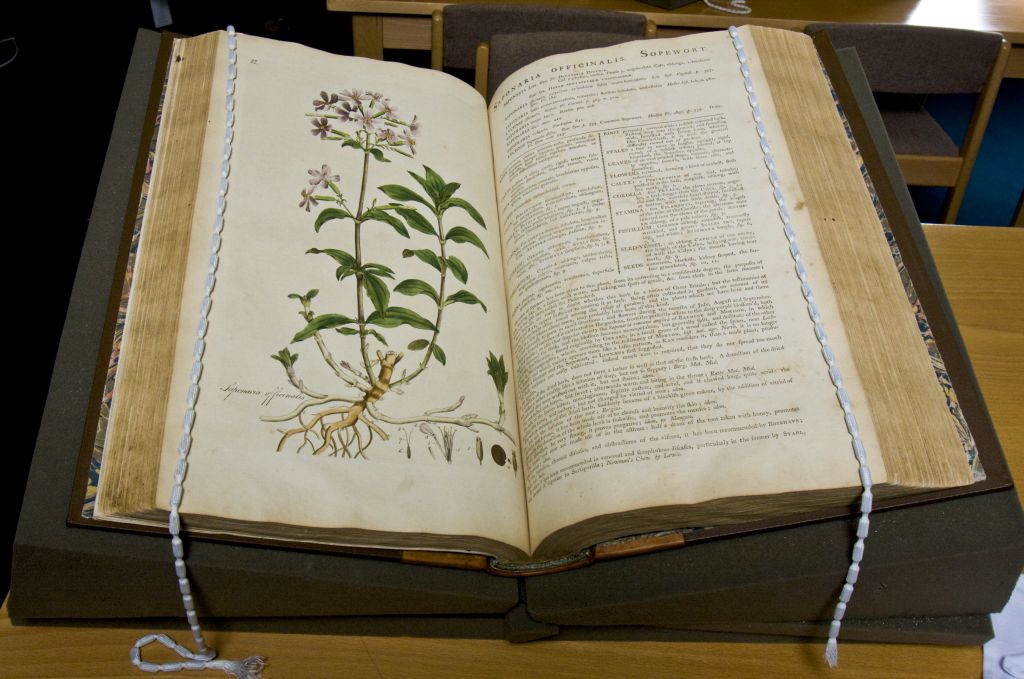
Honeysuckle, from Flora Londinensis, by William Curtis (1777-98). Image: King’s College London
Medicine
Medicine is another strength of our Georgian period collections. King’s has a rich medical tradition, incorporating not only the foundation of King’s College Hospital in 1840 but the merger in the 1990s with two far older teaching hospitals, St Thomas’s (originally a medieval foundation) and Guy’s, founded in 1721. All these institutions assembled large collections of 18th and 19th century medical books, and there is surprisingly little duplication of holdings between their respective historical collections.
Many of the Georgian period medical books in our collection originally belonged to the Physical Society of Guy’s Hospital. Founded in 1771 and active until 1852, the Physical Society, membership of which was open to apothecaries, physicians and surgeons , held weekly meetings, hosted lectures and ran a lending library. It played an important role in fostering debate on medical and scientific matters, and many of its leading members, such as Astley Cooper, whose works are well represented in the collection, were also instrumental in establishing the formidable reputation of Guy’s Hospital as a centre for medical education in the early 19th century. Somewhat surprising to 21st century eyes is the presence in the Physical Society’s collection of a copy of the second edition of Thomas De Quincey’s Confessions of an English opium-eater (1823), bound with a copy of Samuel Merriman’s Synopsis of the various kinds of difficult parturition (1814).
The historical library collection of St Thomas’s Hospital is a similarly rich resource for the study of medicine in the Georgian period. The works of those associated with St Thomas’s are, as one would expect strongly represented, and include copies of William Cheselden’s magnificently illustrated Osteographia (1733), works on the plague written and formerly owned by the physician Richard Mead and a copy of Gilbert Blane’s Observations on the diseases incident to seamen (1785), inscribed by the author, a St Thomas’s physician who made pioneering discoveries on the link between scurvy and diet.
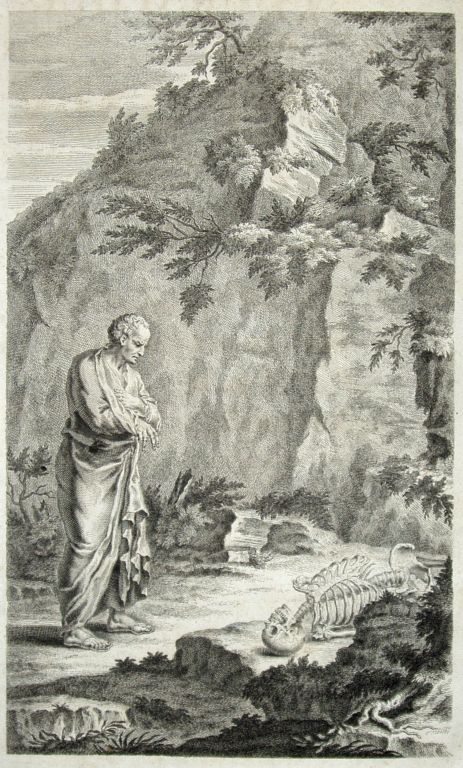
Frontispiece to Osteographia, by William Cheselden (1733). Image: King’s College London.
Many of our early 19th century medical books have now been digitised for the UK Medical Heritage Library.
Find out more
This summary of our Georgian holdings can only provide a snapshot of the richness of our collections, which span the humanities, social sciences and sciences. From copies of the Tamil New Testament of 1715 (the first translation of the Bible into a language of India) and the Oriental miscellany of 1789 (the first printed rendition of Indian music in Western notation) to copies of Samuel Johnson’s Dictionary of the English language (1755) and volumes of 18th century English hymnals and chapbooks, our collections provide a rich and wide-ranging resource for anyone interested in the life and achievements of the Georgian period.
To find out more, please consult the library catalogue and the Foyle Special Collections Library’s web pages or contact Foyle Special Collections Library staff, who will be happy to provide further information.
